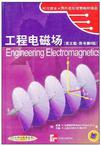工程电磁场
出版时间:2002-5 出版社:机械工业 作者:本社 页数:561
前言
本书是著名的McGraw-Hill教育出版公司于2001年在美国纽约出版的《工程电磁场》教科书,适用于工科本科第一学期课程,也很适用于我国高等学校进行“工程电磁场”课程的双语教学。原书(1958年第1版)作者是美国普渡(Purdue)大学的Hayt教授,经几次改版,现在第6版增加了合作作者Buck教授。本书自第1版自起一直是美国在电磁场方面的畅销书。全书行文生动流畅,十分精练,叙述概念非常准确。作者在序言中就说明了其写书的原则是注重物理概念的理解和解题能力的培养,所以写得很有特色,主要体现在以下几点:1.建立新概念,提出新问题、新内容,做到由浅入深,循序渐进,从正反两方面分析比较。例如讲到用流线描绘点电荷的电场分布时,用了四个图加以比较讨论,使初学者印象深刻;又如讲矢量分析一章时,先说明在研究电磁场的初级课程中,不用矢量分析理论也可以,只是存在缺点和局限性,再提出用矢量分析的必要性和优点,然后进入主题,这样可提高学生的学习兴趣和紧迫感。2.讲解新的物理结构模型时,先从广泛意义上日常普遍接触观察到的现象入手。例如讲解电容时,先说明只要两个导体中间隔以介质,有电位差,导体上就会有电荷储存,就产生了电容作用,体现了电容的本性。进而再讲述有特殊结构的电容器和电容的计算方法及储能公式等。这样从感性认识出发,由表及里,达到理论高度,符合认识规律。
内容概要
《工程电磁场(英文版)(原书第6版)》讲述电磁场基础的优秀教材,书中列举了大量的实例与分析,使学生能够掌握难于理解的观念。另外,众多的例题与思考题也使《工程电磁场(英文版)(原书第6版)》便于自学。
作者简介
作者:(美国)威廉 H.哈伊特(William H.Hayt.Jr.) (美国)约翰 A.比克(John A.Buck)
书籍目录
PrefaceChapter 1 Vector Analysis1.1. Scalars and Vectors1.2. Vector Algebra1.3. The Cartesian Coordinate System1.4. Vector Components and Unit Vectors1.5. The Vector Field1.6. The Dot Product1.7. The Cross Product1.8. Other Coordinate Systems: Circular Cylindrical Coordinates1.9. The Spherical Coordinate SystemChapter 2 Coulomb's Law and Electric Field Intensity2.1. The Experimental Law of Coulomb2.2. Electric Field Intensity2.3. Field Due to a Continuous Volume Charge Distribution2.4. Field of a Line Charge2.5. Field of a Sheet Charge2.6. Streamlines and Sketches of FieldsChapter 3 Electric Flux Density, Gauss' Law, and Divergence3.1. Electric Flux Density3.2. Gauss' Law3.3. Applications of Gauss' Law: Some Symmetrical Charge Distributions3.4. Application of Gauss' Law: Differential Volume Element3.5. Divergence3.6. Maxwell's First Equation (Electrostatics)3.7. The Vector Operator V and the Divergence TheoremChapter 4 Energy and Potential4.1. Energy and Potential in a Moving Point Charge in an Electric Field4.2. The Line Integral4.3. Definition of Potential Difference and Potential4.4. The Potential Field of a Point Charge4.5. The Potential Field of a System of Charges: Conservative Property4.6. Potential Gradient4.7. The Dipole4.8. Energy Density in the Electric FieldChapter 5 Conductors, Dielectrics, and Capacitance5.1. Current and Current Density5.2. Continuity of Current5.3. Metallic Conductors5.4. Conductor Properties and Boundary Conditions5.5. The Method of Images5.6. Semiconductors5.7. The Nature of Dielectric Materials5.8. Boundary Conditions for Perfect Dielectric Materials5.9. Capacitance5.10. Several Capacitance Examples5.11. Capacitance of a Two-Wire LineChapter 6 Experimental Mapping Methods6.1. Curvilinear Squares6.2. The Iteration Method6.3. Current Analogies6.4. Physical ModelsChapter 7 Poisson's and Laplace's Equations7.1 Poisson's and Laplace's Equations7.2. Uniqueness Theorem7.3. Examples of the Solution of Laplace's Equation7.4. Example of the Solution of Poisson's Equation7.5. Product Solution of Laplace's EquationChapter 8 The Steady Magnetic Field8.1. Biot-Savart Law8.2. Ampere's Circuital Law8.3. Curl8.4. Stokes' Theorem8.5. Magnetic Flux and Magnetic Flux Density8.6. The Scalar and Vector Magnetic Potentials8.7. Derivation of the Steady-Magnetic-Field LawsChapter 9 Magnetic Forces, Materials and Inductance9.1. Force on a Moving Charge9.2. Force on a Differential Current Element9.3. Force Between Differential Current Elements9.4. Force and Torque on a Closed Circuit9.5. The Nature of Magnetic Materials9.6. Magnetization and Permeability9.7. Magnetic Boundary Conditions9.8. The Magnetic Circuit9.9. Potential Energy and Forces on Magnetic Materials9.10. Inductance and Mutual InductanceChapter 10 Time-Varying Fields and Maxwell's Equations10.1. Faraday's Law10.2. Displacement Current10.3. Maxwell's Equations in Point Form10.4. Maxwell's Equations in Integral Form10.5. The Retarded PotentialsChapter 11 The Uniform Plane Wave11.1. Wave Propagation in Free Space11.2. Wave Propagation in Dielectrics11.3. The Poynting Vector and Power Considerations11.4. Propagation in Good Conductors: Skin Effect11.5 Wave PolarizationChapter 12 Plane Waves at Boundaries and in Dispersive Media12.1. Reflection of Uniform Plane Waves at Normal Incidence12.2. Standing Wave Ratio12.3. Wave Reflection from Multiple Interfaces12.4. Plane Wave Propagation in General Directions12.5. Plane Wave Reflection at Oblique Incidence Angles12.6. Wave Propagation in Dispersive MediaChapter 13 Transmission Lines13.1. The Transmission-Line Equations13.2. Transmission-Line Parameters13.3. Some Transmission-Line Examples13.4. Graphical Methods13.5. Several Practical Problems13.6. Transients on Transmission LinesChapter 14 Waveguide and Antenna Fundamentals14.1. Basic Waveguide Operation14.2. Plane Wave Analysis of the Parallel-Plate Waveguide14.3. Parallel-Plate Guide Analysis Using the Wave Equation14.4. Rectangular Waveguides14.5. Dielectric Waveguides14.6. Basic Antenna PrinciplesAppendix A Vector AnalysisAppendix B UnitsAppendix C Material ConstantsAppendix D Origins of the Complex PermittivityAppendix E Answers to Selected Problems*Index
章节摘录
插图:A vector quantity has both a magnitudeI and a direction in space. We shallbe concerned with two- and three-dimensional spaces only, but vectors may bedefined in n-dimensional space in more advanced applications. Force, velocity,acceleration, and a straight line from the positive to the negative terminal of astorage battery are examples of vectors. Each quantity is characterized by both amagnitude and a direction.We shall be mostly concerned with scalar and vector fields. A field (scalaror vector) may be defined mathematically as some function of that vector whichconnects an arbitrary .0rigin to a general point in space. We usually find itpossible to associate some physical effect with a field, such as the force on acompass needle in the earth's magnetic field, or the movement of smoke particlesin the field defined by the vector velocity of air in some region of space. Note thatthe field concept invariably is related to a region. Some quantity is defined atevery point in a region. Both scalar fields and vector fields exist. The temperaturethroughout the bowl of soup and the density at any point in the earth areexamples of scalar fields. The gravitational and magnetic fields of the earth,the voltage gradient in a cable, and the temperature gradient. in a soldering-iron tip are examples of vector fields. The value of a field varies in generalwith both position and time.
编辑推荐
《工程电磁场(英文版)(原书第6版)》:时代教育·国外高校优秀教材精选
图书封面
评论、评分、阅读与下载
用户评论 (总计1条)
- 比较好的一本入门书,内容介绍没得说。值得收藏。缺点是影印效果不太好,纸张差了点。原版已经有第七版。
